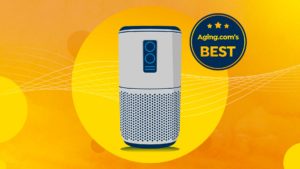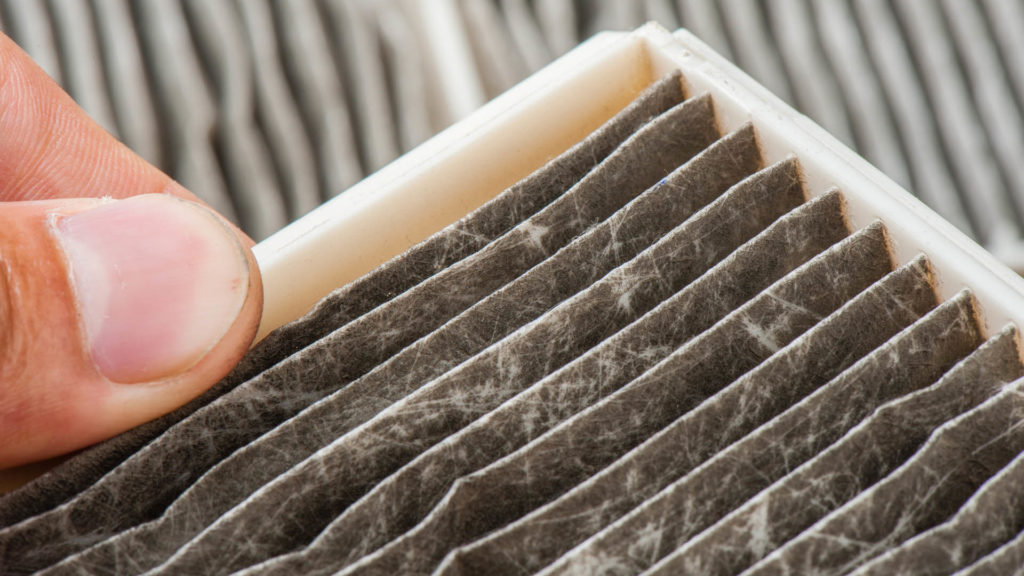
Some of the links on this page may link to our affiliates. Learn more about our ad policies.

Air quality monitors have become popular over the past few years – thanks in large part to the Covid-19 pandemic and raging wildfires in many parts of the United States. But are they accurate and are they worth the investment? Finding the right air quality monitor can come down to several factors.
Find What You Need
What are Air Quality Monitors?
Air quality monitors are devices that measure indoor air quality (IAQ) where the monitor is located. They can generally detect gasses or particles in your home that can be hazardous. There are many on the market these days for personal use and they will help give you an idea of the air quality in your home. They are generally small, portable, and easy to set up and use. They can cost anywhere from around $70 to a few hundred dollars. Some high-end monitors can cost several thousand dollars and generally have to be installed by a professional.
Home air quality monitors can detect a variety of pollutants, depending on the one you choose. They will typically measure for carbon dioxide, dust, mold, pollen, radon, and VOCs. However, some more advanced monitors may measure for other things.
Carbon Dioxide
Carbon dioxide is a colorless, odorless, non-flammable gas and it’s one of the most common gasses on earth. It occurs naturally when we breathe it out of our body, but it can also be produced from burning fossil fuels or rotting vegetation. It can build up inside your home because of poor ventilation. Too much carbon dioxide can cause everything from headaches to respiratory problems.
Dust
It doesn’t matter how much you clean – you can never get rid of the dust. What accumulates inside a home is the result of the climate, the age of the house, and how many people live there. About 60 percent of the dust inside your home comes from outside and is a combination of dirt, fabric fibers, skin cells, and anything else that becomes dry and flakes off. It can cause sneezing and coughing, especially in people who are allergic to dust.
Mold
Mold thrives in places with a lot of moisture. The bathroom is a prime spot for it, but it’s also common in pipes and roof and window leaks. Moisture can also reside in insulation, carpet, and ceiling tiles. It can also easily make its way inside from the outdoors. Some people are allergic to mold, and it can cause respiratory problems for those with existing lung issues.
Pollen
Pollen is a fine powder produced by certain plants, released in the air, and picked up and scattered by the wind. In the spring, it’s easy to detect since it forms the thin green layer of powder that seems to cover everything. It’s one of the main triggers of seasonal allergies.
Radon
Radon is colorless, odorless, and toxic radioactive gas. It occurs naturally in the soil, especially soil that has a lot of clay. It enters through cracks and holes in your foundation and accumulates in the lowest rooms in the house like basements or crawl spaces. Over time, it can increase your risk of developing lung cancer.
VOCs
VOC stands for volatile organic compounds. VOCs consist of a large group of chemicals found in many building and maintenance products used in our homes. Adhesives, air fresheners, carpet, caulks, cleaning products, composite wood products, paints, smoke, varnishes, and vinyl flooring are all sources of VOCs. Long-term exposure can cause respiratory issues.
Most air quality monitors will also track humidity levels and the temperature. Some will sync with local weather services and let you know the air quality outside as well.
How is Air Quality Measured?
On a large scale, the U.S. government measures the air quality with the Air Quality Index (AQI). The AQI is a number scale that tells you how clean or dirty the air is. The scale runs from zero to 500 – the higher the number, the worse the quality of the air and the greater the risk to your health. The AQI tracks five major air pollutants – airborne particles, carbon monoxide, ground level ozone, nitrogen dioxide, and sulfur dioxide. Airborne particles and ground level ozone are the two main ingredients in smog.
The U.S. government uses instruments on the ground and satellites orbiting the earth to collect information about what is in the air. Some of the National Oceanic and Atmospheric Administration’s (NOAA) satellites monitor particle pollution like smoke particles from wildfires, airborne dust during sand and dust storms, ash from erupting volcanoes, urban and industrial pollution, and ground level ozone. They can provide measurements of particles in the air during the day every five minutes.
Air quality monitors that are made for home use are electronic and are equipped with air sensors that collect data about the pollution levels in your immediate area inside. They take measurements of your indoor air quality periodically and let you know the real-time data. The device will let you know if you need to take action and do something to get the air inside cleaner.
Are Air Quality Monitors Accurate?
Whether an air quality monitor is accurate will depend greatly on the sensors. Some studies have shown little correlation between price and accuracy – revealing that the cheaper models may be just as good as more expensive monitors. The South Coast AQMD is a regulatory agency in a part of California that includes Los Angeles and it’s responsible for improving air quality in the region. They have tested many home air quality monitors and released their own results if you’d like to see their findings.
Do I Need an Air Quality Monitor?
Knowing the quality of the air you and your family are breathing is important, regardless of your health. It can help you look for ways to improve what’s circulating indoors, as well as find problems within your home and its foundation that need to be fixed.
Air quality monitors may be most beneficial if you have allergies, asthma, chronic obstructive pulmonary disease (COPD), or other respiratory illnesses. They may also help if you live near a factory or power plant that emits fumes into the air. Those fumes can seep inside and an air quality monitor can help you determine if the air around you is too polluted to be outdoors.
What Should I Consider When Buying an Air Quality Monitor?
There are a few things to keep in mind when buying an air quality monitor. Make sure the monitor you’re looking at has a true base station and has an app where you can see the information easily and can control the monitor from it. Here are some other things worth considering:
Real-Time Updates
Make sure the monitor you buy gives real-time updates. You want to make sure the device is giving you the information it receives as quickly as it can so you can know what’s floating around inside your home.
Tracking Ability
Look for a monitor that can record at least 24 hours’ worth of data, that way you can track the air quality in your home over time and understand the times when it’s worse or better.
Multiple Readings Tracking Ability
Make sure the device you choose measures for more than one pollutant simultaneously. That way you can know what you may be exposed to at any given time.
Some air purifiers now come equipped with air quality monitors with real-time feedback. It may be worth investing in one of these types of units, because the air purifier will automatically adjust to clean the impurities out of your air – forcing clean, purified air back out.
The Bottom Line
Air quality monitors for the home are relatively new devices. Because of this, there isn’t yet a lot of research that has been done on their effectiveness. But based on the information we have, if you suffer from respiratory issues, having an air quality monitor is a good idea. It can help you know when the air inside your home is more polluted than it needs to be which could trigger an allergic, asthmatic, or respiratory episode. It’s a good idea to consider an air purifier equipped with an air quality monitor. That way, you won’t just know the air inside is bad, you can immediately do something about it. But be sure to buy one that detects multiple pollutants so you can have a better understanding of what’s floating around inside your home and look for ways to improve the air you breathe.



